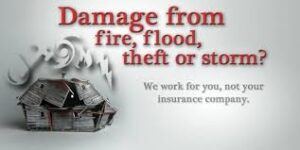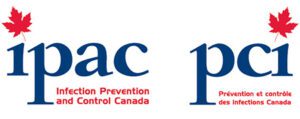Watch out for sub-standard work when using an insurance recommended mold removal company
What to watch out for / how to deal with substandard mold removal companies recommended by insurance companies
Today’s post deals with how to watch out for sub-standard work when using an insurance recommended mold removal company and, more importantly, what to do when you find it.


Why is this becoming common and why bring this up at all?
In our line of business, and as a company with a good reputation for quality work, we are starting to see a number of troubling indicators in the field.
We are seeing a rise in insurance claim work that is sub-standard and not done correctly. We have been called in on many occasions by homeowners who are concerned that the job left behind in their basement or attics was done correctly. We have not seen an insurance claim related mold removal repair that has been done correctly yet.
Mostly what we see are quick and dirty jobs where things are missed, sometimes fairly obvious ones that cause problems for a homeowner once the work has been “completed”. We have completed air analysis reports that indicate the presence of elevated moisture levels right after the work was supposedly cleaned up and found issues.
Insurance company / Restoration company relationship
We believe this is as a result of a race to the bottom…restoration companies that have on-going relationships with insurance companies that feed them work regularly do not look out for your best interests, they look out for their own.
Remember your rights;
- You have the right to use your own IICRC mold remediation company, (https://mapleleafmold.ca/iicrc-certified-company/). General Contractors are not mold remediation specialists, (https://mapleleafmold.ca/general-contractors-can-far-damage-suspect/), and;
- You do not have to use any “recommended” restoration company the insurer suggests. In fact, it is against better interests to do so, (we have literally been called in to hundreds of substandard mold remediation projects done by “recommended restoration or mold companies”.
- You have the right to receive a professional job from one of the top mold company’s in the business…nothing less.
Climate Disruption
This is all coming to a head as we are starting to see the accelerated effects and the number of increasing insurance claims related to, and as a result of, Climate Disruption.
Whether or not you believe in the science or have your own thoughts on the matter insurance companies certainly believe it and Climate Disruption damage has been calculated into the costs of homeowners insurance policies. Insurance companies are experts in calculating risk factors as potential impacting variables on their revenue streams…and to them, Climate Disruption is a big factor. So big that some of the largest insurers in Europe are no longer providing coverage against the likelihood of flooding and resulting mold contamination in basement apartments and homes. And this will only become more common here in North America as we see increasingly flooding and strengthening storm activity.
Now, insurance companies are looking to mitigate their exposure to these rising costs and one of the primary methods of doing so is to squeeze lower and lower supplier costs out of service providers like mold removal and restoration companies.
As a result, this tightening of costs have led to mold removal / restoration companies cutting corners and not completing work to the higher standards that are required when dealing with your families health.
Because of these very reasons we do not complete work on behalf of any insurance company. In fact, we have refused offers to work for insurance companies. Your interests would be compromised and our high standards would be put in jeopardy.


Mold Insurance Coverage
Mold can render your home essentially unsellable
Whether or not your home insurance will cover mold-related damages or mold eradication procedures depends on your policy and the factors contributing to mold growth. Most mold growth is caused by water leakage or poor ventilation and unfortunately, many homeowners policies do not cover all kinds of water damage.
Typically, standard homeowners policies do not cover water damage caused by “maintenance” problems. These include slower, ongoing problems like continuous water seepage or repeat leaks, ongoing humidity problems, problems related to your landscaping or drainage on the property, or condensation. You should also know that almost all homeowners policies generally exclude flood damage, so if your home develops mold from a flood this is probably not going to be covered.
Conversely, typical homeowners policies will often cover sudden and accidental water issues such as burst pipes. If you have sump pump coverage or sewer back coverage, you probably know it, but check your policy to be certain. Other than these kinds of water sources, though, the odds of your policy covering your water source are slim. Remember to make sure to investigate to make sure your pipes were in proper working order and that there were no failures or defects; finding this kind of water damage source may be the only way you can get coverage.
The bad news? Insurance companies are getting tired of mold too. Even if your insurance does cover some water damage many companies now explicitly limit or completely exclude coverage mold-related damage, regardless of the source. Be sure to read your homeowners policy every year, because providers are starting to trim their mold endorsements.
Insurance companies are getting tired of mold too. Even if your insurance does cover some water damage many companies now explicitly limit or completely exclude coverage mold-related damage, regardless of the source
If you need mold coverage and don’t have it, there may be other options. Some policies, for instance, offer “buy-back” endorsements for mold claims which let you pay more money in exchange for some limited mold coverage. Other policies simply cap the amount of mold coverage or pay only for certain things such as cleanup or testing. So whether you’re buying a new home or switching policies, just be aware: it is far more difficult to find a mold damage inclusive policy for a home that has a history of mold.
Warning Signs and Preventative Measures
The very best way to protect yourself, your family and your home from mold is to prevent it! There is no substitute for preventative measures when it comes to mold infestation. Don’t rely on your insurance to make you whole when it comes to mold. Take your health and your home into your own hands and follow these simple steps to avoid mold;
- Keep the humidity level in your home low, preferably no more than 30-50%.
- Use and maintain bathroom ventilation systems.
- Use both air conditioners and de-humidifiers.
- Install and maintain all-season attic and crawlspace ventilation systems.
- Keep drain lines from your air conditioning unit clean and unobstructed.
- Use exhaust fans when cooking, dishwashing, and using any other appliance that creates moisture.
- Add mold inhibitors to paints before using them.
- Insulate windows, walls, pipes, roofs, exterior, floors and other cold surfaces to reduce condensation.
- Routinely check indoor sources of moisture (leaky pipes, appliance hoses, faucets, toilets).
- If you see condensation or water collecting anywhere, dry it quickly and find the water source so you can get rid of it.
- Use steel-reinforced hoses instead of plastic ones.
- Check all entrances for leaks, stains, and odors.
- Fix plumbing problems right away. Wet areas that get and stay dry 24-48 hours after a leak or spill happens usually do not mold.
- Don’t install carpet in wet areas like bathrooms, basements and kitchens.
- Clean bathrooms with mold killing products like bleach and keep them dry.
- Line crawlspaces with plastic sheeting.
- Repair holes and cracks in walls and foundation of basement and crawlspaces.
- Make sure landscaping outside slants away from your foundation.
- Clean and maintain your rain gutters and drainpipes.
- Watch your utility bills; an unusually high water bill could signal an interior leaking problem.
- Turn off your main water valve when you travel.
Take your health and your home into your own hands


Maple Leaf Mold Inc. is a certified mold / asbestos removal and biological disinfection / air analysis company located in Toronto that uses certified IICRC technicians for all testing and remediation projects.
We are a professionally licensed firm experienced in testing, verifying and removing Mold / Asbestos / Lead and other environmental contaminants as well as providing disinfection services to control and kill biological contaminants.
Call 416-254-7256 to talk with us about your issue anytime.






